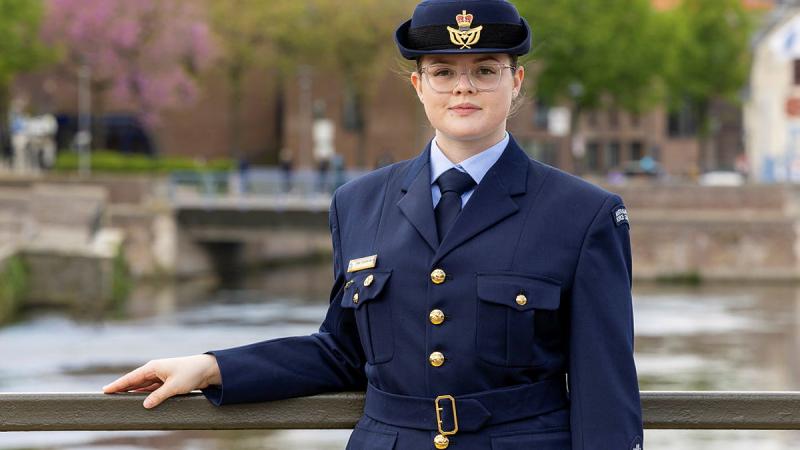The pilot of a Yakovlev YAK 9 warbird which entered a low altitude spin before impacting the ground had not previously conducted aerobatics in the aircraft and so was unlikely to be aware of its unique handling characteristics, an ATSB investigation into the accident has found.
The investigation report details that the pilot, prior to undertaking a planned instructional flight with an instructor in the YAK 9* later that afternoon, took off from Latrobe Regional Airport, Victoria shortly after 2:20pm on 7 September 2018 for a local private flight.
Data from the nearby East Sale RAAF Base air traffic control radar showed the aircraft tracked first to the south-west, maintaining runway heading, before turning north-west. North of the town of Moe, at an altitude of about 2,800 feet above sea level, the pilot began to conduct what witnesses on the ground described as aerobatic manoeuvers.
The pilot was endorsed for aerobatic manoeuvres completed by 3,000 feet above ground level but had not previously conducted aerobatics in the YAK 9.
With limited experience and recency in flying the YAK 9, the pilot was likely unaware of the aircraft’s unique handling characteristics during aerobatic manoeuvres or spin recovery.
One witness described observing the aircraft perform what appeared to be a roll followed by a loop. The aircraft came out of the bottom of the loop and made an abrupt left turn before spiralling towards the ground. Video taken by another witness showed the aircraft in a spinning, steep nose‑down attitude prior to disappearing from view.
The aircraft was found to have impacted the ground in a paddock about 3 km north of Moe, in a flat, slightly right‑wing and nose-low attitude consistent with an aircraft established in, or recovering from, a spin. The pilot was fatally injured and the aircraft destroyed.
ATSB Transport Safety Director Stuart Macleod said the accident highlights the risks inherent with performing low-level aerobatics in high performance aircraft.
“High‑performance aircraft like the YAK 9 transition into a fully developed spin quicker and more forcefully than a typical light training aircraft. It is essential to have sufficient altitude to effectively recover from a spin,” he said.
“Experienced YAK 9 pilots stated that, depending on pilot experience, 5,000 to 7,000 feet is required to safely recover the aircraft from a developed spin.
The report notes, unlike in most other warbird aircraft, as the airspeed increases during a high-speed dive recovery, in the YAK 9 the effort required to pull back on the control stick reduces.
“This investigation reinforces to pilots performing low-level aerobatics the importance of observing minimum approved operating heights, commensurate with their ability and qualifications, and to engage in regular flight reviews and instruction.”
The investigation report notes the pilot had conducted aerobatics in a number of warbird aircraft but only had between five and six hours of flying experience in the YAK 9, and that the accident flight was the pilot’s first in the aircraft in three months.
“With limited experience and recency in flying the YAK 9, the pilot was likely unaware of the aircraft’s unique handling characteristics during aerobatic manoeuvres or spin recovery,” Mr Macleod said.
The ATSB investigation also identified a number of safety issues that while they did not directly contribute to the accident flight, increased risk.
For example, the aircraft’s canopy had been opened intentionally in flight the previous day, resulting in the loss of documentation from the aircraft including the aircraft checklist, flight manual and maintenance release.
“Pilots need to ensure that careful preparation and planning is undertaken prior to each flight and that all documentation, checklists and required manuals are appropriately stored and accessible within the aircraft,” Mr Macleod said.
In addition, post-accident examination of the aircraft identified incomplete maintenance practices, including inadequate airframe anti‑corrosion measures and insecure primary flight controls and seat fasteners.
* The YAK-9 was a Russian-designed single-seat fighter aircraft used during the Second World War, similar in performance to the Spitfire and P-51 Mustang. The accident aircraft, a YAK-9 UM, was a replica of the original design, built in the 1990s and fitted with two seats and an American-built, rather than Russian, engine.
You can find here the investigation report AO-2018-061: Loss of control and collision with terrain involving YAK-9UM, VH-YIX, 19 km west-north-west of Latrobe Regional Airport, Victoria, on 7 September 2018









